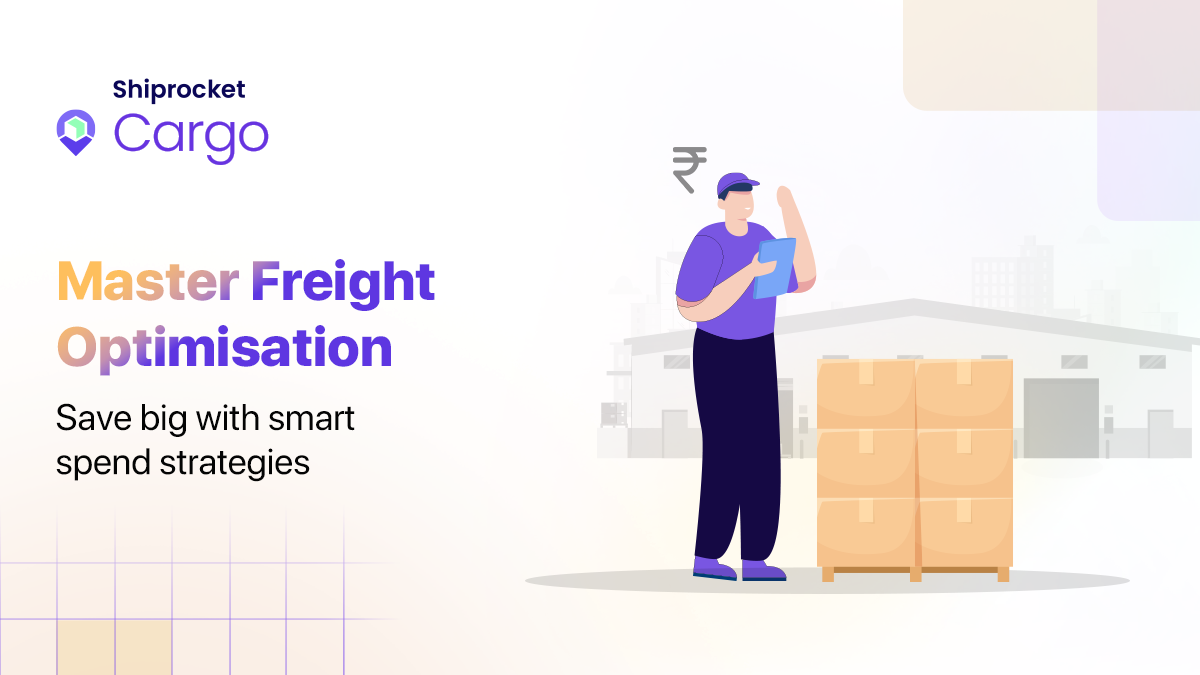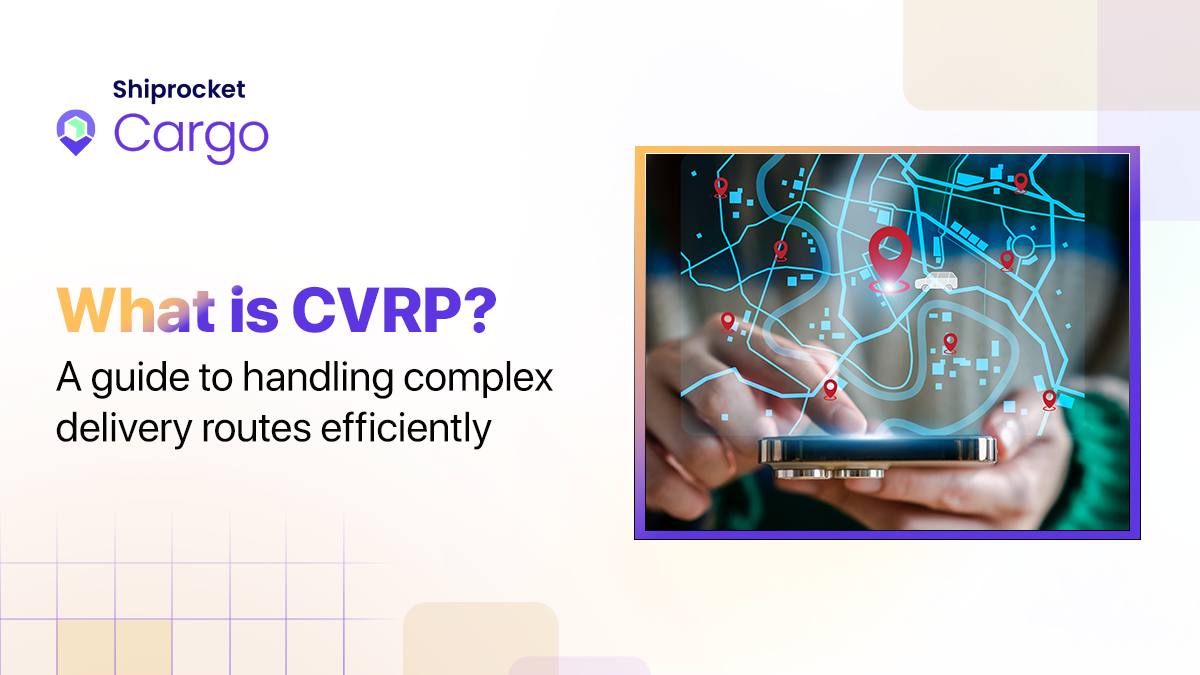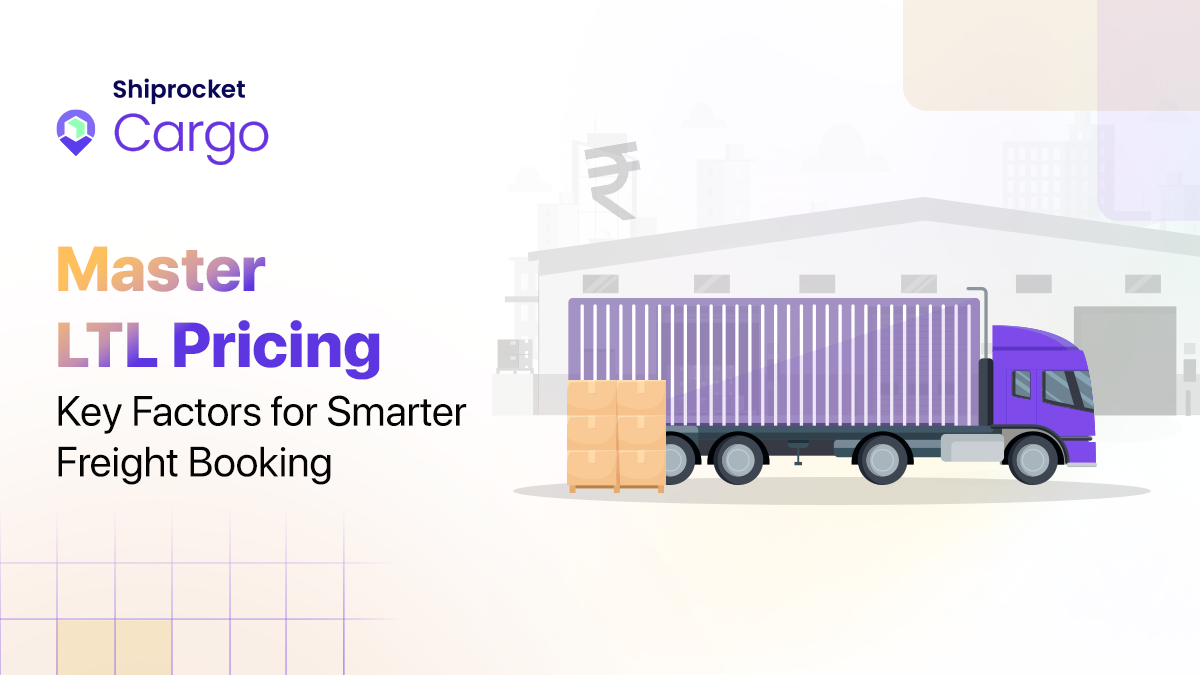Understand Route Planning in Detail
- Route Planning: Know in Detail
- Why Route Planning Matters For Businesses?
- 1) Improved Efficiency
- 2) Cost-effectiveness
- 3) Reduces Manual Intervention
- 4) Reduced Emissions
- 5) Customer Satisfaction
- 6) Includes Location Intelligence
- 1) Multi-Stop Route Planning
- 2) Dynamic Route Planning
- 3) Open Path Routing
- 4) Closed Path Routing
- 5) Reverse Open Path Routing
- 6) Depot-to-Depot Route Planning
- Difference between Static and Dynamic Routes
- Elements Taken Into Account While Planning a Route
- How Does Route Planning Software Help With the Process?
- Conclusion
Eliminate the hours spent manually planning routes and filling out spreadsheets with a delivery management system. Businesses seek optimal delivery solutions to streamline logistics and improve supply chain operations. However, logistics planning entails in-depth planning and organisation of seamless transportation procedures and storage of goods. This will enable a business to satisfy the customer requirements timely.
Delays at any stage of transportation, from procurement to the final delivery, can impact customer experience negatively. Thus, route planning and optimisation are important factors that can benefit the business. This can significantly lower fuel costs by 20%.
Logistics route planning has changed how businesses manage transportation operations. It helps operations managers get the best out of their fleets.
Route Planning: Know in Detail
Route Planning plays a crucial role in ensuring cost-effective delivery. It aids in reduced miles, optimum driver performance, timely delivery, and satisfied customers. Route Planning regulates the delivery sequence and routes for shipments. It computes the effective way of transportation through different halts.
For example, if the shipment company has to deliver 20 orders in a day, route planning will provide the correct sequence and route for the delivery. It examines the most cost-effective way of transporting goods from one place to another.
Route planning takes into account various factors like distance, truck capacity, delivery time windows, traffic at the route, and cost-effectiveness. Earlier, this was a time-consuming manual activity prone to errors, but nowadays advanced route planning software are there. They use AI and machine learning to complete the delivery by finding the shortest route. It will help businesses save time, money and fuel, decrease vehicle wear and tear, and improve customer satisfaction.
Why Route Planning Matters For Businesses?
Below are some of the significant benefits of opting for route planning for businesses-
1) Improved Efficiency
Route planning improves efficiency by saving time, resources, and fuel. It can help lessen travel distance, decrease trip time, and improve productivity by determining the best route.
2) Cost-effectiveness
Route planning helps find the shortest route, reducing travel distance. This helps save fuel and vehicle maintenance costs. It minimises empty miles and vehicle idling time, decreasing overall transportation costs.
3) Reduces Manual Intervention
Checking new orders, segregating them as per their drop location, checking delivery time windows, and various other factors to plan delivery locations consume a lot of time. With the help of route planning software, everything is automated, which saves a lot of time and effort.
4) Reduced Emissions
By opting for route planning, you are also helping to save the environment by reducing carbon emissions. Trucks use less fuel if they follow efficient routes.
5) Customer Satisfaction
Route planning is essential to make your customers happy. If you want your customers to be satisfied with your services, it is vital to deliver their goods on time. You can guarantee timely arrival at the customer’s place by route planning. It will not only enhance customer satisfaction but also build trust and improve the company’s reputation.
6) Includes Location Intelligence
Various route planning software uses AI, machine learning, and other technologies. They help analyse the success or failure of the delivery and, based on that, can auto-correct the address. The right address mapping can reduce miles, which further lessens overall delivery costs.
Route Planning: 6 Types
There are six major types of route planning, and each of these assists businesses in meeting their diverse needs. Let’s know about them in detail-
1) Multi-Stop Route Planning
This one is best for routes with more than one stop. It can be created easily using any route planning software, as it will provide the best routes and delivery time for shipments. It generates routes based on the maximum number of stops a driver can cover in one round-trip.
2) Dynamic Route Planning
This type of route planning helps drivers reroute on a real-time basis. Let us understand this with the help of an example: the delivery person has been assigned to deliver four shipments in one trip. But, one customer cancels the order. In a normal situation, the delivery guy will attempt the delivery that the customer has already canceled, which will waste time and effort.
Dynamic route planning immediately updates the cancellation status and provides the new delivery route. Along with that, it also updates the trip based on traffic, weather issues, vehicle breakdown, etc., and also assigns an additional delivery vehicle to complete the deliveries on time.
3) Open Path Routing
This type of route planning is for you if you want to reach stops in the shortest time. Although it is very effective as it covers various stops, there is a disadvantage of this route planning type, i.e. it does not account for when the route would end. The final stop is far from the depot; therefore, returning to the depot requires a lot of fuel, which can be a little expensive.
4) Closed Path Routing
This is a cost-effective method, as the route is chosen in a way that ensures the driver’s final stop is close to the depot. It chooses a U-shaped path that helps the driver complete the delivery and then again takes them back to the depot as the final stop it chooses is close to the depot.
5) Reverse Open Path Routing
The route in this method is created to allow the driver to return to the depot. The route starts from the farthest stop from the depot. This method is recommended for trucks that carry heavy loads and want to improve fuel efficiency. This method ensures the vehicle returns to the depot quickly, lessening the room for any mistake.
6) Depot-to-Depot Route Planning
This type of route planning is important for middle-mile logistics. It plans routes for drivers to travel from one depot to another. This planning is ideal for vehicles that start with an empty or full load. The trips are planned by checking the total distance between the depots, the time for loading or unloading the vehicle, etc.
Difference between Static and Dynamic Routes
A lot of people get confused between static and dynamic routes, so let us compare them to learn about their different features and characteristics-
| Characteristics | Static Route | Dynamic Route |
| Path Selection | This route opts for pre-planned routes where the stop remains the same | It provides numerous available routes to the destination |
| Ability to update routes | Network administrators will have to update the routes manually, as delivery relies on the same schedule | This one is best for factoring in the last-minute changes |
| Ease of Design | The static route is easy and quick to design and implement | It is relatively complex and applied in larger networks |
| Protocol | This route does not follow any set protocols | It uses Routing Information Protocol (RIP) and real-time protocols for planning a delivery route |
| Routing tables | It has a small routing table with just one entry for every destination | It sends entire routing tables to check the route availability |
Techniques for Organising Delivery Routes
There are four different ways to organise delivery routes-
· Pen and Paper
· Google Maps
· Excel
· Route Planner Applications
Techniques might be different, but the approach is somewhat the same. So here is how you can do route planning effectively using these techniques-
1) Analysis– The first thing you need to do is analyse the route. Take into account the starting point, rest stops, and final destination. Other factors that you should consider are traffic, weather conditions, journey duration, road closures, distance, etc.
2) Create a Route– By now, you know the distance and other factors that might affect the route. You can create the route manually by using Google Maps in Excel or with pen and paper. You can also create routes using route planner applications, as that saves time and effort; you just need to enter the details, and it will provide you with different paths. The main objective is to create different pathways so that the best one can be selected.
3) Evaluation– In this stage, you need to evaluate the potential routes and rate them. The primary motive in this stage is to choose the best path so that the orders can be delivered on time with maximum productivity, as it will save fuel, time, and money.
4) Optimisation- The last step is to optimise the route that you have selected. You can check for traffic on the route, gasoline consumption, etc. Choose the best path that maximises the outcome.
Elements Taken Into Account While Planning a Route
There are a lot of factors that you should consider for route planning. Here are some of the significant ones-
1) Order or Delivery Parameters
This is the primary element that needs to be taken care of. It includes the total number of deliveries for the day, priority orders, and checking if the addresses mentioned are correct or not so that the delivery can be planned accordingly.
2) Driver Parameters
The next important thing to consider when planning a route is the number of drivers available. Preparing appropriate sequences and routes for the available pool and rates of drivers, and checking if they are familiar with the local routes is imperative. It enables them to execute timely deliveries as they will not have to spare time finding the location.
3) Transit Parameters
Another thing that you should not miss checking is traffic and restrictions. Check real-time traffic conditions and then plan routes to reduce idle times for vehicles.
4) Route Tracking
It is recommended to use GPS technology to track vehicles in real-time and update the route planning system accordingly. Also, you should receive alerts or notifications in case the driver deviates from the planned route or requires assistance.
5) Autosave
Use the autosave function, as it enables the route planning software to continue working even if there is no internet connection. It gets updated in real time and saves all the important journey information. Therefore, you will not have to worry about any interruptions causing delays.
Daily Route Planning vs Strategic Route Planning
Route planning is one of the best ways to increase efficiency because it maximises the driver’s productivity. Besides, it also minimises the time spent on the road by accounting for delivery times, vehicle capacities, driver schedules, traffic, and other relevant factors.
However, route planning has prominently two major elements- daily route planning and strategic route planning. Some significant differences between these two include:
| Parameter | Daily Route Planning | Strategic Route Planning |
| Focus | Uses route optimisation features to focus on the day-to-day scheduling of your fleet operations. | Focuses on unlocking and optimising the potential of your fleet by testing diverse ‘what-if’ scenarios. |
| Nature | Routes, strategies, and territories are already defined for daily route planning. | Strategic route planning applies to not only those shipments that run static or master routes but also to dynamic routes. |
| Ideal for | Daily route planning is ideal for static route plans. | Strategic route planning is ideal for both dynamic and static route plans. |
| Type | Daily route plans are generated based on orders delivered during the same day or the next or after several days. | Strategic route planning generates routes based on capacity, cost, frequency, and numerous other factors. |
How Does Route Planning Software Help With the Process?
Manual intervention most likely generates inefficient routes. Thus, route planning software can immensely help in ensuring efficient planning, organising, and managing transportation logistics.
These tools not only help businesses optimise delivery routes but also reduce transportation costs, improve schedule management, and enhance customer satisfaction. This software also helps extend your vehicle’s lifespan and reduce the risk of expensive accidents by minimising driver stress.
If you are looking for a tech-enabled shipping solution for all your heavy and bulk shipments, Shiprocket Cargo is a go-to tool. This B2B cargo shipping company streamlines the entire route planning process to scale your business by providing access to multiple carriers, real-time tracking, affordable rates, dedicated support, and shipping to 24,000+ pin codes.
Furthermore, with its AI-backed intelligent route planning, it optimises and plans daily routes. Businesses can reduce their shipping costs, transit distance, and delivery duration with Shiprocket Cargo’s advanced and strategic route planning capabilities.
Join the next-gen shipping solution at your fingertips to meet all your cargo needs.
Route Planning and Route Optimisation Software: Differences
Route planning and optimisation are both important for maximising efficiency and giving businesses a competitive edge. However, there are some dissimilarities between them. To provide you with a clear and concise explanation of the differences between both, we have listed some aspects that set them apart:
| Route Planning | Route Optimisation | |
| Definition | Route planning involves strategic planning to determine the most suitable and shortest route between 2 points. | Route optimisation is an advanced approach that goes beyond conventional route planning to minimise driving distances, optimise delivery sequences, and utilise resources effectively. |
| Process | Helps businesses to complete the delivery route in a logical manner | Facilitates businesses by creating different route variations and plans using complex algorithms. |
| Route Generation | Routes are generated based on distance, irrespective of all other factors | This process considers all parameters besides distance to generate a route, such as traffic conditions, delivery time windows, vehicle capacity, etc. |
| Considerations | Route planning does not consider the intricacies of the dynamic routes and events that impact a driver’s productivity. Instead, it finds the shortest route. | Route optimisation considers numerous factors to finalise the route, such as driving time, idle time, time under the roof, and other constraints that affect the driver’s productivity. |
| Delivery | Customers receive quick deliveries | Customers get an option to choose their preferred time slots during checkout. |
Conclusion
Understanding route planning highlights the transformative impact of leveraging technology. While route planning helps in determining the initial path, route optimisation facilitates fine-tuning routes based on real-time data and optimisation techniques.
The primary objective of an efficient route planner is to generate the quickest and most accessible routes. With top route optimisation software, the process of route planning and scheduling can be streamlined.
Effective route planning lets you enjoy the ability to account for priority stops, drag-and-drop stops, and even time constraints. In addition, you can also make your drivers feel more valued and stress-free, which maximises deliveries.
Some of the common and widely-used methods that allow you to plan delivery routes include Google Maps, Microsoft Excel, Route Planner applications, and a conventional method, which is just a pen and paper.
Route optimisation helps businesses save much on expenses they are incurring and increase their profit. Some instances include minimising fuel consumption, operational costs, overtime pay, and vehicle maintenance. This is done by finding the most efficient paths and minimising the distance travelled.
Some of the prominent factors to look for before planning routes include parking availability, traffic congestion, pedestrian areas, restricted zones, and delivery time restrictions.
Using fleet management software, CRM (customer relationship management) tools and GPS tracking systems can help you streamline operations and enhance overall efficiency.



